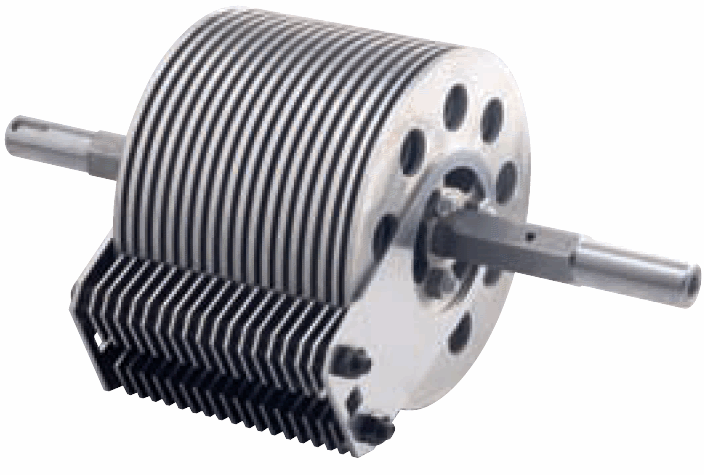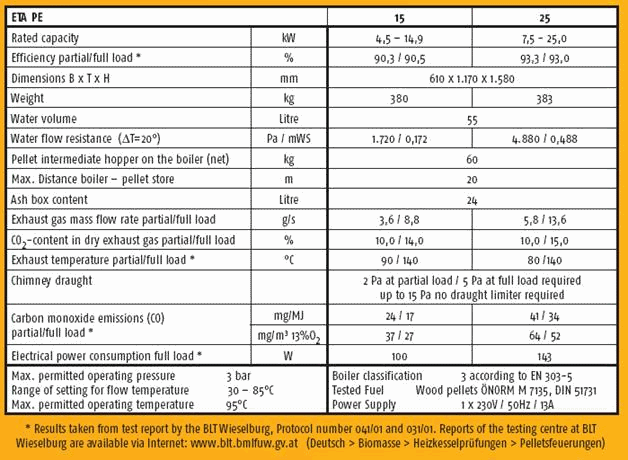
|
Perfection of a New Generation All the ETA range of boilers are built to an exacting standard using the highest quality materials matched with second to none Austrian Engineering. The ETA PE range of domestic pellet boilers are designed with ease of use, efficiency and safety as priorities. 1. Automatic Filling: The PE boiler uses a vacuum turbine to automatically load pellets from the main pellet store as required. The boiler is connected to the main store by flexible vacuum hoses, the boiler can suck pellets up to a maximum distance of 20 meters. There is a 60kg day hopper built into the boiler from where pellets are fed, as required, to the burning chamber. 2. Advanced Pellet Feeding: The boiler has an advanced pellet feeding system that takes pellets from the day hopper to the burning chamber in a measured and safe manner. The system has a built in rotary valve that prevents any burn back from the fire into the pellet store. |
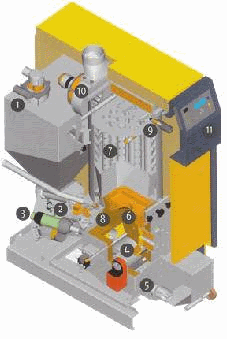 |
||
|
|
3. Automatic Ignition: With an ETA PE there is no messing around with matches and pieces of paper, when the building needs heat the boiler burns, when it does not the boilers switches off. 4. Rotary Grate: This device (patented by ETA), allows continuous de-ashing during combustion. Pellets burn on the rotating grate, as it turns the grate removes ashes and introduces air directly to the fire bed. This means highly efficient use of fuel with pure fertilizer left in your ash bin
|
||
|
5. Ash Removal: Automatic ash removal from the combustion chamber to the ash box. 6. Complete Combustion: Top of the range technology ensures that the combustion chamber always gives complete combustion of the wood pellets with miniscule emissions in the exhaust. 7. Dew Point Safe Heat Exchanger: Automatic daily cleaning ensures that there are always optimal conditions available to achieve the best burning efficiencies. 8. Thermal Mixing Valve: Allows flow temperatures vary from 30-85° C 9. Lambda Probe: Continuous monitoring of the O2 content in the exhaust allows the boiler to adjust burning conditions, as required, to suit changing fuel quality. 10. Quite Draught Fan: The draught fan on all PE models is practically inaudible; a feedback loop to the control panel ensures that there is always negative pressure in the combustion chamber. 11. Complete Regulation: An intelligent system allows remote operation, zone & hot water tank control and weather compensated heating
|
|||
|
Advanced Feed System ETA have designed their feed system to be efficient, safe, robust and easy to maintain. Metering Screw: The metering screw removes pellets from the day hopper. Every time the screw turns the CPU is able to calculate how many pellets have been used. From the control panel can tell you, in kgs, how much fuel is being used. Rotary Valve: The rotary valve is fed by the metering screw with pellets, the reason that the rotary valve is not placed directly under the day hopper is to prevent wear on the valve edges that is caused by pellets get stuck there.
|
 |
||
|
The rotary valve is the fire break between the pellet store and combustion chamber and as follows; Pellets are dropped into rotary valve chambers at the top by the metering screw. The wheel turns around and drops the pellets into the stoker screw, thereby keeping solid brass between possible fire and the pellet hopper at all times. Auto-Ignition: The ignition fan operates by blowing compressed air over an electric heating element, similar to the way an electric paint stripper works. Wood pellets require 200°C to ignite, if required the ignition fan can provide air at 650°C Stoker Screw: The stoker screw pushes pellets, received from the rotary valve, into the combustion chamber where the pellets are ignited and burnt Rotary Grate: Pellets from the stoker screw are burnt on top of the rotary grate, continuous grate movement means the fire bed is always being riddled and fed with plenty of air – thus allowing for a full and clean burn of the fuel. Cleaning Comb: The cleaning comb fits in between the gaps in the rotary grate, continuously cleaning the grate as it turns. Grate Flap: Each day as the heat exchanger cleans itself the soot is dropped on top of the rotary grate, during the process the grate flap opens while the rotary grate rotates in the opposite to normal direction allowing the soot to be dropped on top of the ash screw. Ash Screw: This auger comes on during cleaning to push all ashes and soot into the ash bin at the front of the boiler Combustion Chamber: The combustion chamber is lined with precision made refractory blocks, this allows the flame to burn up to 1200°C without damage the chassis of the boiler
|
|||
|
Safety
First: Negative Pressure: A draught fan on the outlet of the boiler exhaust pipe ensures that there is always negative pressure in the burning chamber. Positive pressure can lead to explosive burn back along the feed system and is one of the main areas that boilers with front mounted draught fans fall down. In the event that the draught fan fails there are sensors to tell the CPU to shut down all air valves and put out the fire.
|
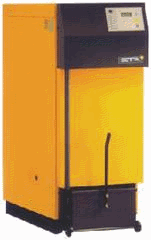 |
||
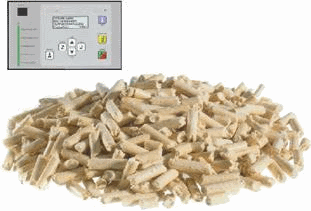 |
Rotary Valve: The rotary valve in the feed system place a solid piece of brass between the burning chamber and the day hopper creating an air tight seal. There is no need for water based fire extinguishers to be penalised on this boiler Fire Break in Main Hopper: In the unlikely event that fire does make it back to your main pellet store along the suction pipes, there is a fire break placed in the front of the extraction auger. Any fire in this area will cause expanding foam to block the path of fire into the main hopper. We have never seen one of these deployed!! |
||
|
Boiler Sensors: The boiler has many sensors built in, including the following; Boiler Temp, Exhaust Temp, Flow Temp, Negative Pressure in Burning Chamber, O2 Content, Flow Temperature, etc. If any of these readings starts going out of normal operating condition then the boiler will make moves to correct it – failing this the boiler will shut down.
|
|||
|
Design: The combustion chamber, combined with the ETA rotary grate and automatic cleaning process ensure the existence of the basic conditions, at all times, required to create a consistent, long lasting fire. This results in low ash accumulation, high burn efficiency and unusually low emission values. The screw beneath the combustion chamber automatically removes ash into the ash box. Consistency: Complete
Control: |
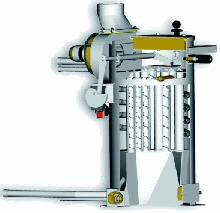 |
||
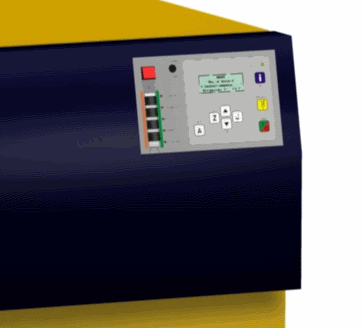 |
All extended control modules are connected through the ETA control BUS. Similar to the way ETA regulates it's own heating system (e.g. boiler, accumulator, etc) you can add as an optional extra an external control module that will allow you to integrate more heating circuits or regulate a second oil / gas-fired boiler and solar collectors (for heating water) so that they operate seamlessly in a combined heating relationship with the ETA boiler. Regulation:
|
||
|
|
|||






